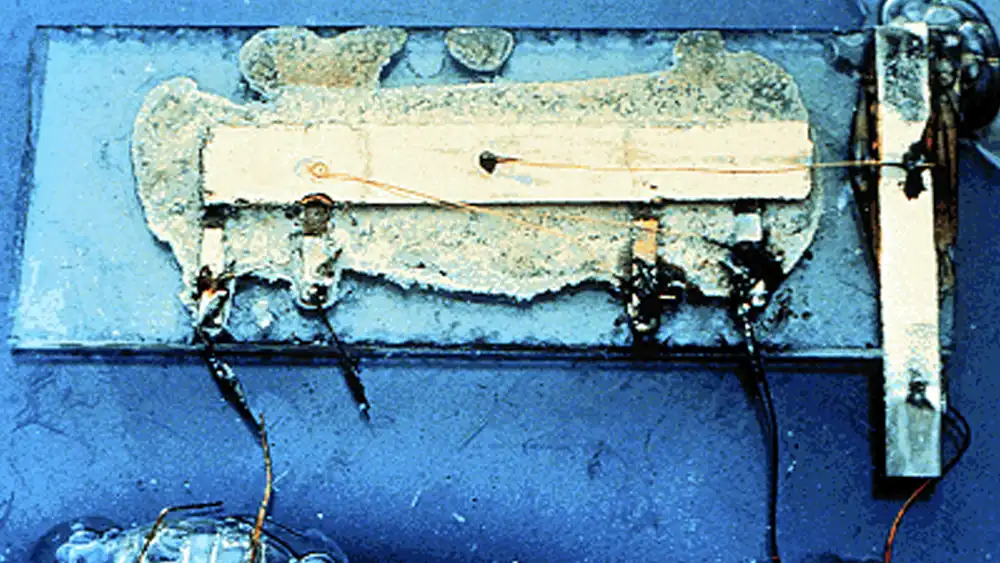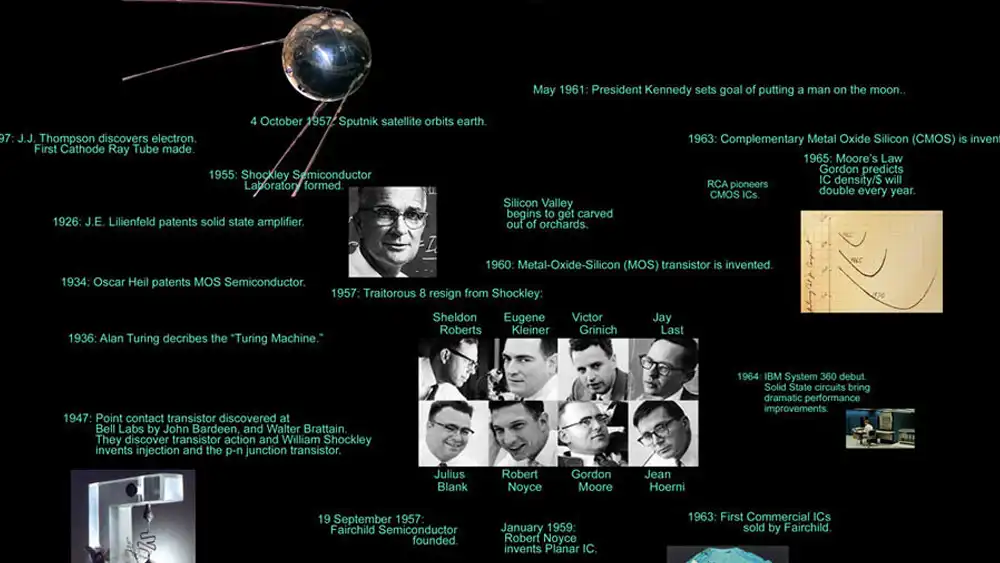The invention of the first integrated circuit marked a revolutionary leap in the field of electronics, setting the stage for modern technology. This groundbreaking innovation has paved the way for the miniaturization and enhanced performance of electronic devices, influencing everything from computers to smartphones.
1958 First Integrated Circuit

The world’s first integrated circuit was developed at texas instruments. This breakthrough marked a significant advancement in electronics, leading to the miniaturization and increased efficiency of electronic devices. Kilby’s invention integrated all the components of a circuit—transistors, resistors, and capacitors—onto a single piece of semiconductor material, typically silicon.
This innovation laid the groundwork for the modern electronics era, enabling the development of complex and compact devices such as computers, smartphones, and other digital technologies. Kilby’s pioneering work in integrated circuits earned him the Nobel Prize in Physics in 2000. His contribution revolutionized the electronics industry and paved the way for the exponential growth of technology in the ensuing decades.
When Was Integrated Circuit Invented and Who Created the First Integrated Circuit
The integrated circuit was invented in 1958 by Jack Kilby at Texas Instruments. This invention marked a major milestone in the field of electronics, leading to the miniaturization of circuits and the development of modern electronic devices. Kilby’s work laid the foundation for the electronics industry as we know it today.
Platform-First Photonic Integrated Circuits: All-Silicon Devices and Systems
Platform-first photonic integrated circuits (PICs) are a significant advancement in the field of photonics, particularly when designed using all-silicon devices and systems. These circuits integrate photonic components, such as waveguides, modulators, and detectors, on a single silicon chip, leveraging the existing silicon fabrication infrastructure.
All-silicon photonic integrated circuits offer several advantages:
- Compatibility with CMOS Technology: Silicon PICs are compatible with conventional CMOS (complementary metal-oxide-semiconductor) manufacturing processes, allowing for cost-effective mass production and integration with electronic circuits.
- High Performance: Silicon has excellent optical properties for guiding light, making it an ideal material for high-speed data transmission and processing.
- Miniaturization: By integrating photonic components on a single chip, these circuits can achieve significant miniaturization, leading to smaller, more efficient devices.
- Energy Efficiency: Silicon photonics can potentially reduce power consumption in data centers and other applications by improving the efficiency of data transfer.
- Scalability: The use of silicon allows for scalable production, making it feasible to produce large quantities of photonic integrated circuits for various applications.
All-silicon devices and systems in photonic integrated circuits are paving the way for advancements in telecommunications, data communications, and other fields requiring high-speed and efficient optical data processing. This technology represents a key step towards the future of computing and communication infrastructure.
Integrated Circuit History Timeline

1958: Invention of the Integrated Circuit
Jack Kilby of Texas Instruments invents the first integrated circuit, demonstrating a working model in September. This invention integrates multiple electronic components onto a single piece of semiconductor material, typically silicon.
1959: Monolithic IC Development
Robert Noyce of Fairchild Semiconductor independently develops a monolithic integrated circuit, which incorporates all components on a single silicon chip. Noyce’s design includes a method for interconnecting the components using planar technology, making mass production feasible.
1961: First Commercial ICs
Texas Instruments and Fairchild Semiconductor begin producing the first commercial integrated circuits. These early ICs are used in military applications and computers.
1963: Development of MOSFET
The Metal-Oxide-Semiconductor Field-Effect Transistor (MOSFET) is developed, further advancing IC technology by allowing more transistors to be packed onto a chip, leading to the era of MOS integrated circuits.
1971: Introduction of the Microprocessor
Intel introduces the 4004 microprocessor, the first commercially available microprocessor, which integrates the functions of a computer’s central processing unit (CPU) onto a single IC.
1978: Development of CMOS Technology
Complementary Metal-Oxide-Semiconductor (CMOS) technology is developed, offering advantages such as lower power consumption and higher density of transistors, becoming the standard for modern ICs.
1980s: Rise of Digital Signal Processors (DSPs)
The development and commercialization of digital signal processors (DSPs) bring powerful computing capabilities to consumer electronics, telecommunications, and other fields.
1990s: Advances in VLSI Technology
Very Large Scale Integration (VLSI) technology allows millions of transistors to be integrated onto a single chip, leading to the development of more powerful and compact computers, mobile phones, and other digital devices.
2000s: System-on-Chip (SoC) Integration
The concept of System-on-Chip (SoC) emerges, integrating all components of an electronic system, including the processor, memory, and peripherals, onto a single chip, driving innovation in mobile and embedded systems.
2010s: Growth of Photonic Integrated Circuits (PICs)
Photonic Integrated Circuits (PICs) become more prominent, integrating optical components on a single chip, advancing telecommunications and data processing technologies.
2020s: Continued Miniaturization and Innovation
Advances in nanotechnology, quantum computing, and AI integration continue to push the boundaries of integrated circuit technology, enabling even more powerful and efficient electronic devices.
This timeline highlights the key milestones in the history of integrated circuits, showcasing the rapid evolution and impact of this transformative technology.
Conclusion
The invention of the integrated circuit has had a profound impact on technology and society, enabling the development of modern electronic devices and systems.
For those interested in learning more about integrated circuits, numerous resources and opportunities for exploration are available, from online courses to hands-on projects.